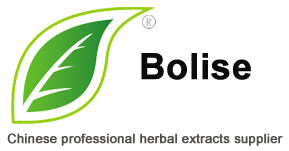Proglumide’s effects and functions
Stomach trouble is, as we all know, three points on governance, seven points by raising.Many patients with stomach trouble do not pay attention to stomach, eat at random, causing the workload to it at spare time, thus reducing a series of intestines and stomach disease. Gastric ulcer and duodenal ulcer are two of the most common gastrointestinal problems.Propyl amine valley is mainly used in the treatment of gastric and duodenal ulcer. It has a good effect on the improvement of the clinical symptoms of peptic ulcer healing.
Proglumide is an acid - resistant drug and treatment of peptic ulcer disease. Proglumide is the first gastrin antagonist found, and benzotript and it are derivatives of glutaramicacid. Proglumide, also a racemic compound known as (±) -5-dipropylamino4-benzoyl amino5-oxy-valeric acid, is a gastrin receptor antagonist with a chemical structure similar to that of gastrin (g-17) and cholecystokinin (CCK).
Let’s introduce the efficacy and function of proglumide pharmaceutical raw materials as follows:
Proglumine has the effect of anti-gastrin, controlling gastric acid and inhibiting pepsin secretion, protecting gastric mucosa and promoting healing.
Main pharmacological effects of proglumide:
Propanangamine can increase the content of aminohexose in gastric mucosa, promote glycoprotein synthesis, protect gastric mucosa and promote healing, improve the symptoms of peptic ulcer and promote ulcer healing. The application of proglumide in the treatment of peptic ulcer and gastritis does not produce the rebound phenomenon of gastric acid secretion, and the gastric acid secretion can remain at the normal level for half a year after the termination of treatment.
In addition, proglumide also has cholagogic effect.
There are three ways to realize it:
①By stimulating bile secretion without dependence of bile acid, it is beneficial to stone drainage, flushing and dredging biliary tract.
②Altering lithogenic factors in bile; The concentration and discharge of bicarbonate are significantly increased by changing the lithogenic factors in bile, & NBSP; And free bilirubin, cholesterol and calcium ion concentration decreased;
③By antagonizing CCK and inhibiting the effect of endogenous CCK on promoting gallbladder contraction, the gallbladder capacity expands and the bile composition in gallbladder is diluted, thus preventing the formation of stone.

 Asia Bio-Pharmaceutical Research Institute
Asia Bio-Pharmaceutical Research Institute Bolise Co., Ltd.
Bolise Co., Ltd.

